Abstract
1. Conflicting values of intracellular pH (pHi) were obtained by Caldwell in crab muscle and by Carter et al. in rat muscle. To investigate this discrepancy, double and single barrelled pH sensitive micro-electrodes as described by Carter et al. were used both in rat muscle (in vivo and in vitro) and in large single fibres of crab (in vitro).
2. The pHi values obtained in the superficial layers of muscle cells in rat and pHi values obtained in the superficial area of large single fibres in crab seemed in agreement with the Donnan equilibrium. Furthermore, when the membrane potential (Em) value of extracellular pH (pHe) value was changed, each new pHi value was obtained instantly.
3. The pHi values obtained in deep layers of muscle cells in rat (pHi 6·68) and in a deep area of large single fibres in crab (pHi 6·96) did not agree with Donnan equilibrium; these pHi values were little influenced by modifications in Em or pHe values.
4. These findings could be easily explained if the length of the sensitive portion of the pH micro-electrode exceeds the diameter of rat muscle cells and is smaller than the diameter of crab large fibres. The pHi values obtained superficially in the two preparations and which seem in agreement with the Donnan equilibrium are artificially low because the Em values recorded by the pH micro-electrodes are partly shunted.
Full text
PDF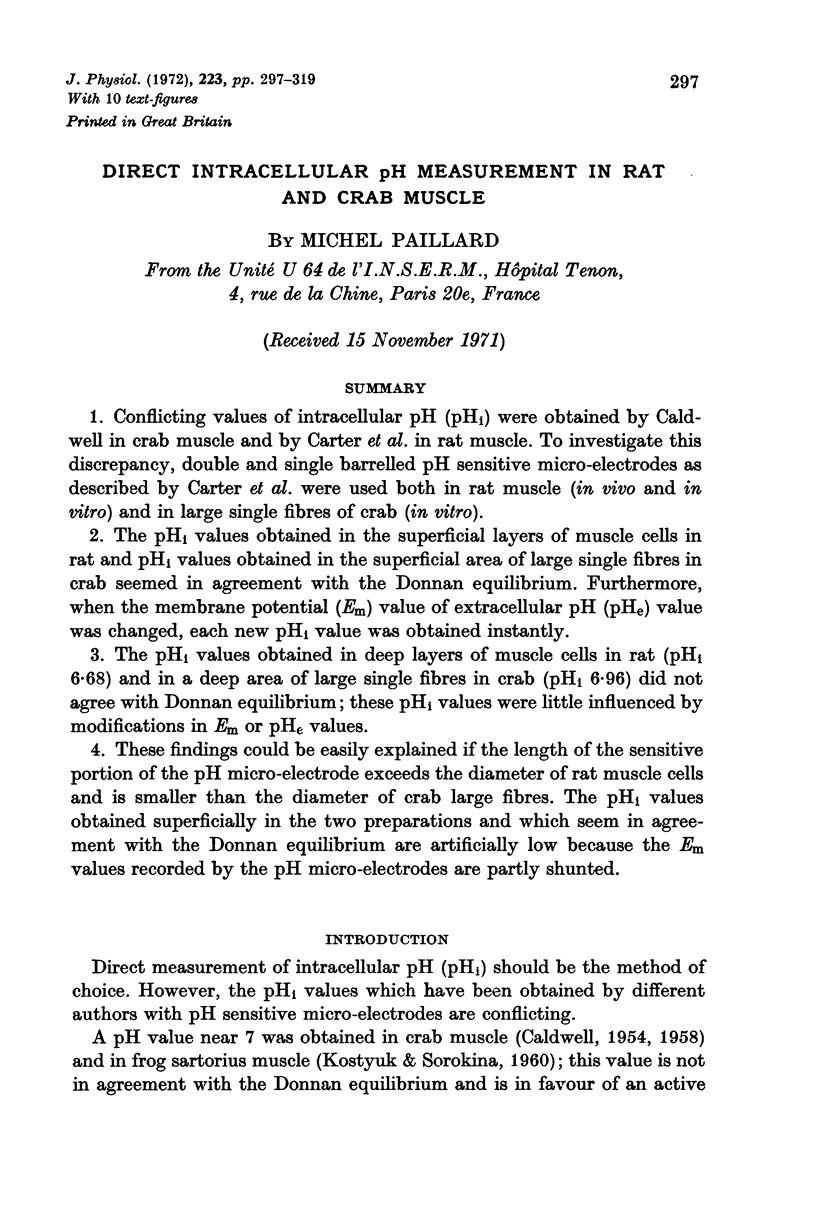
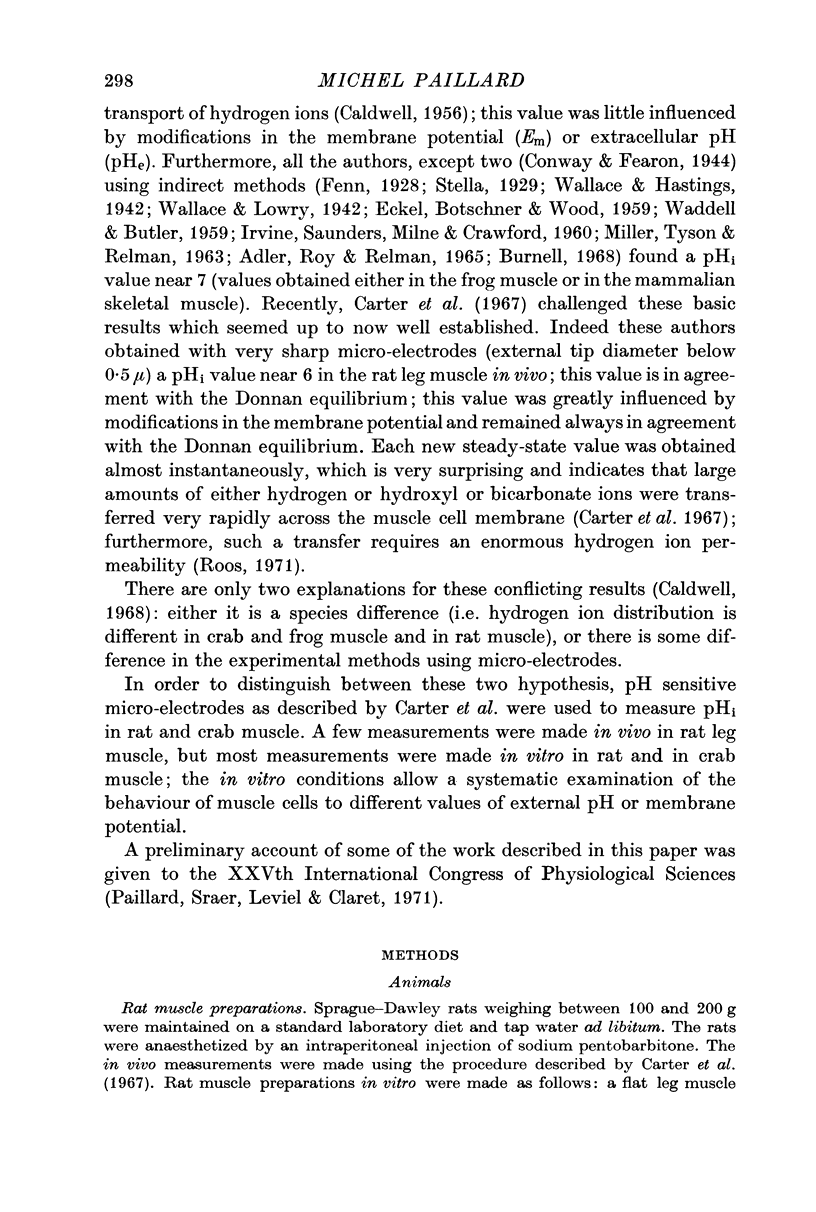
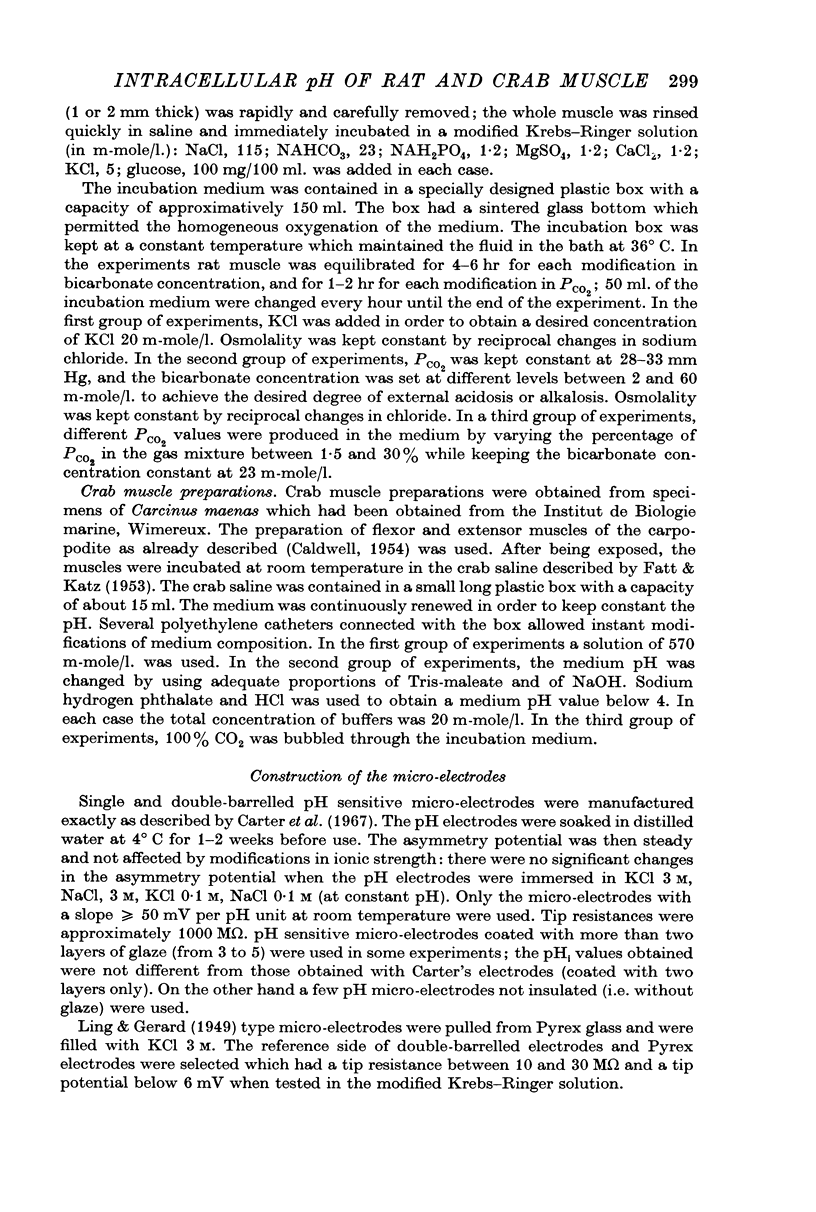
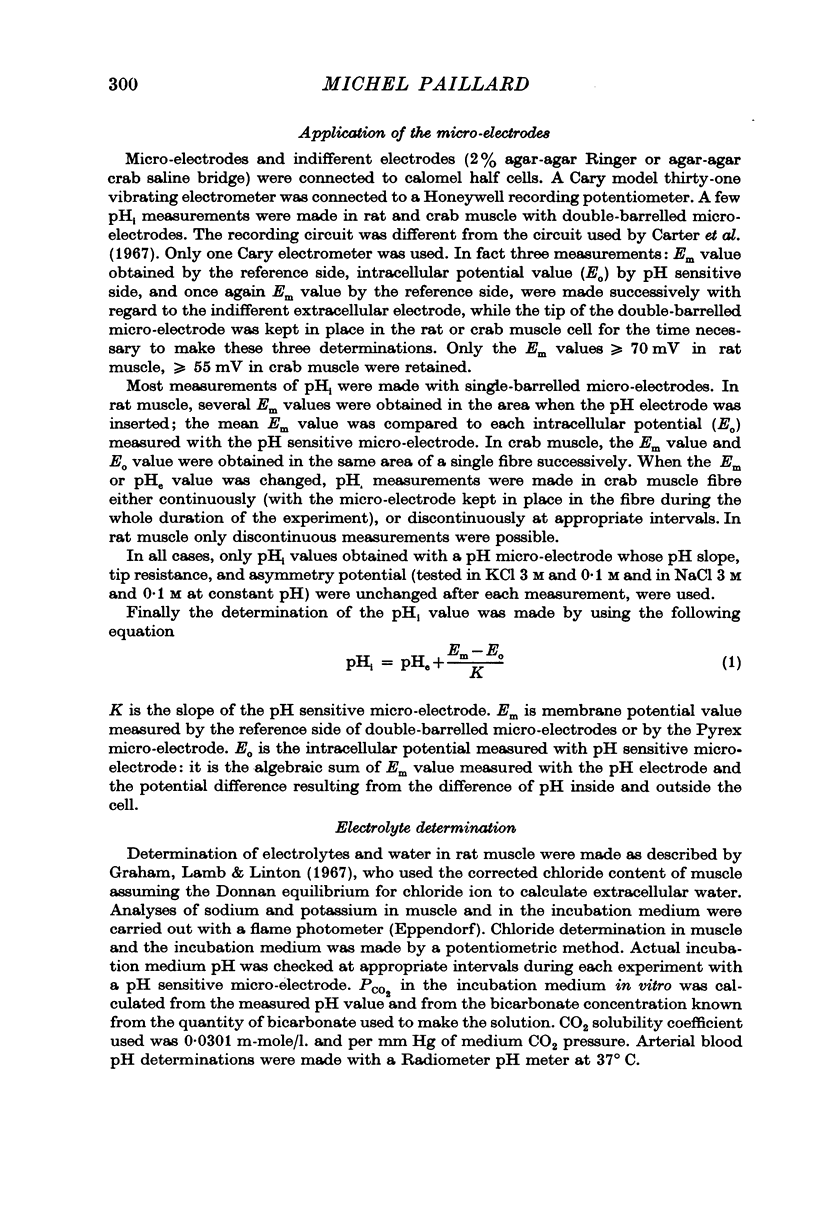
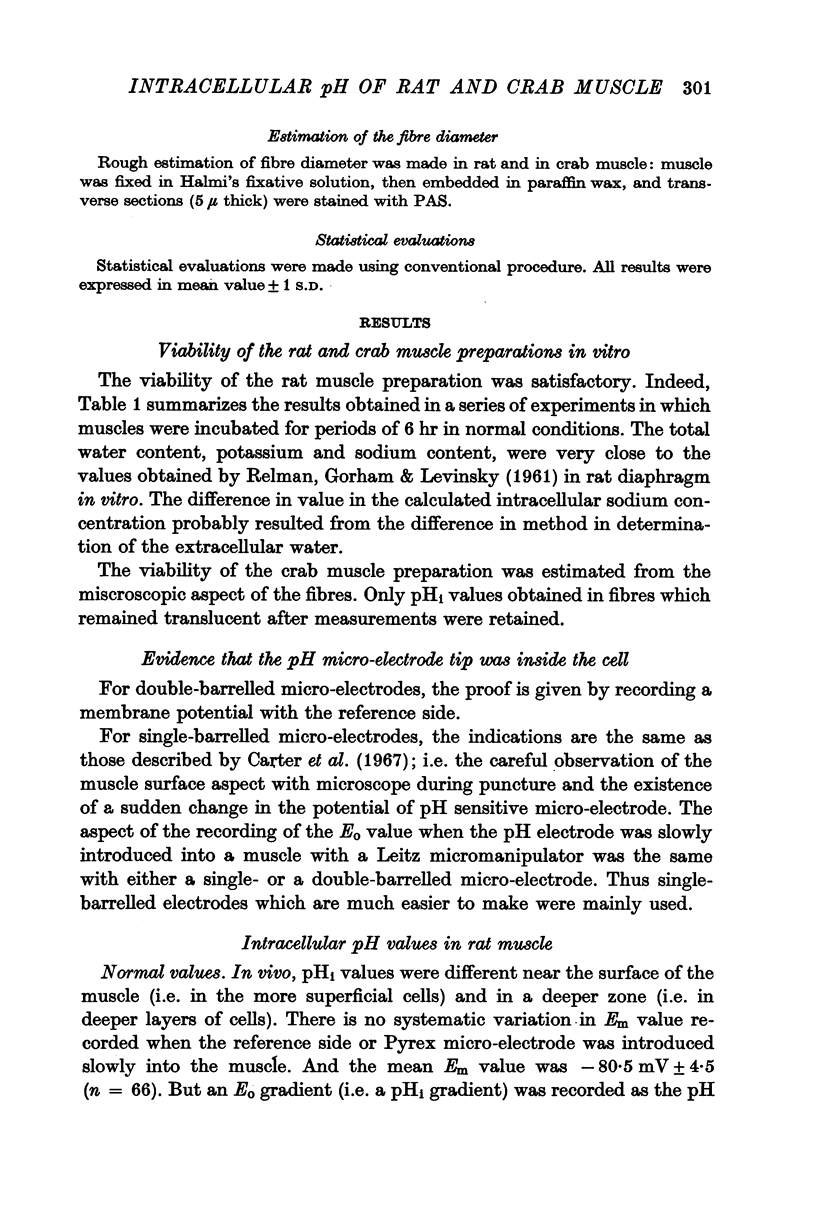
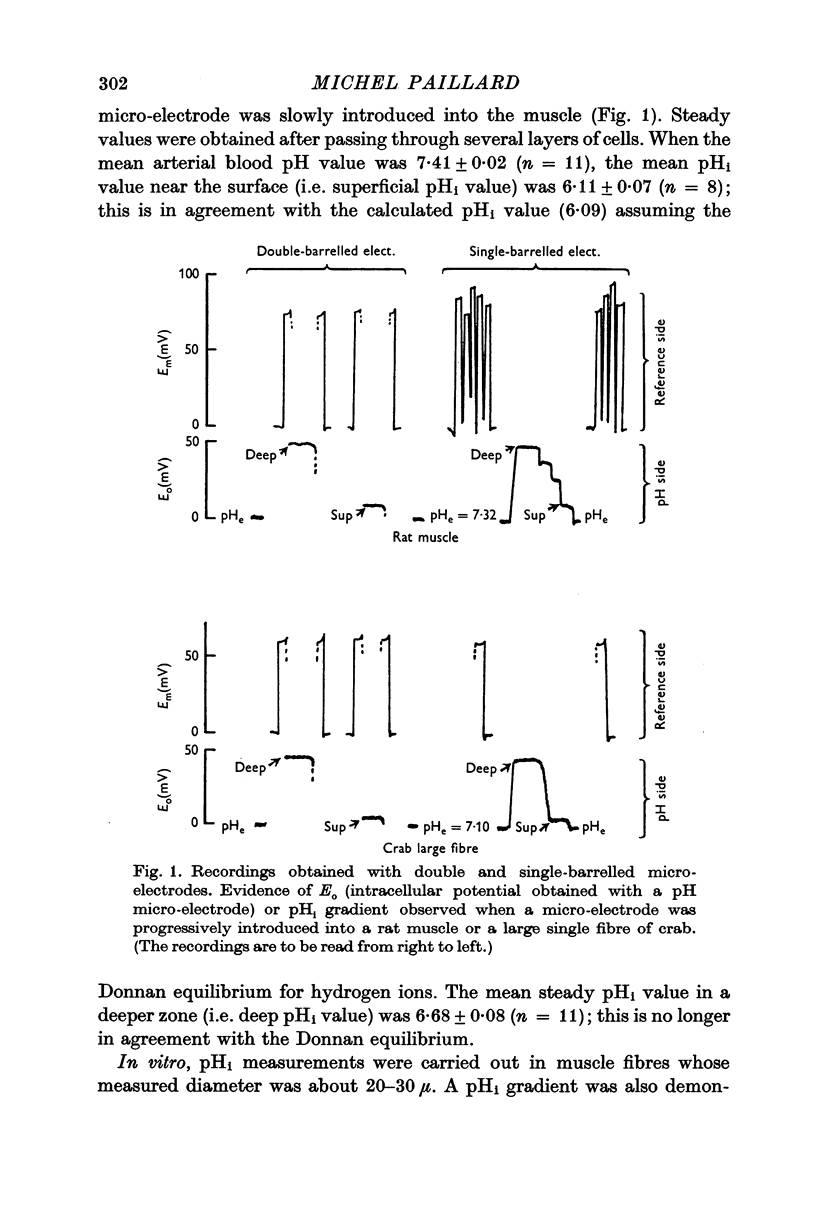
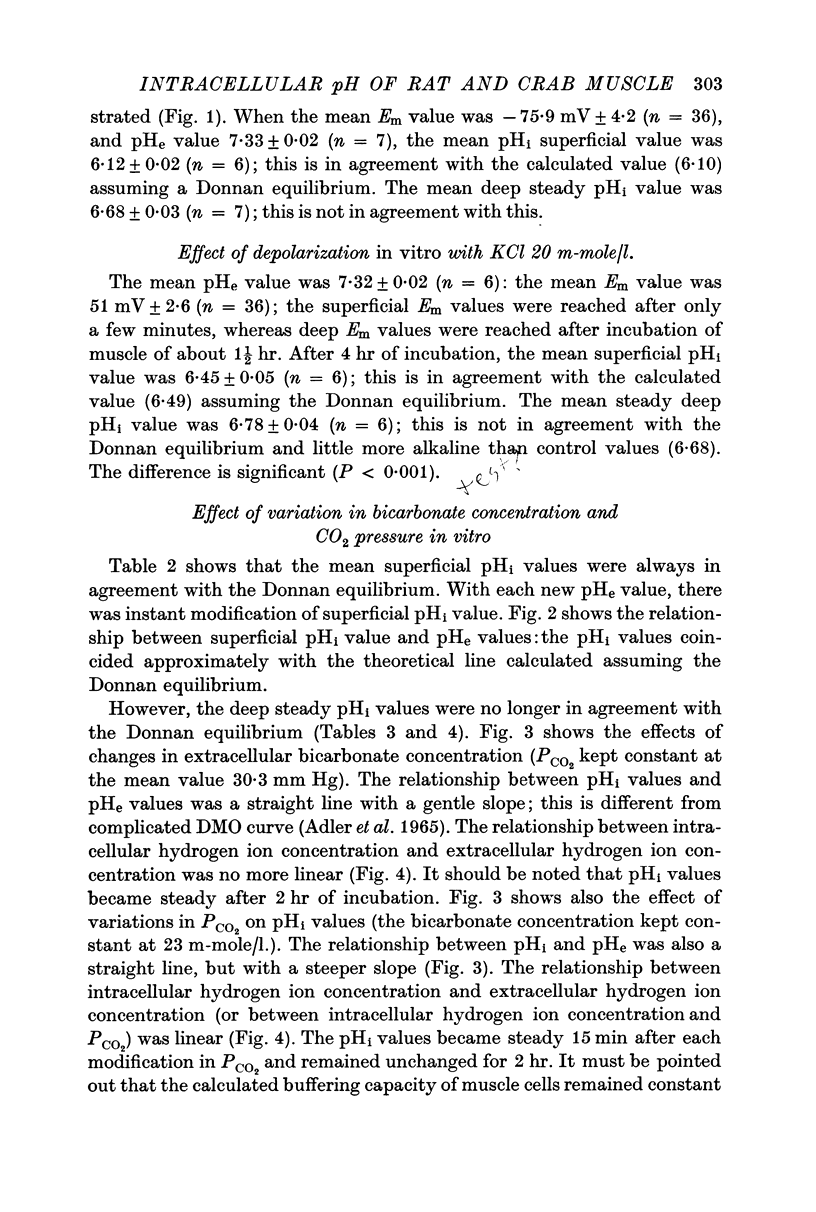
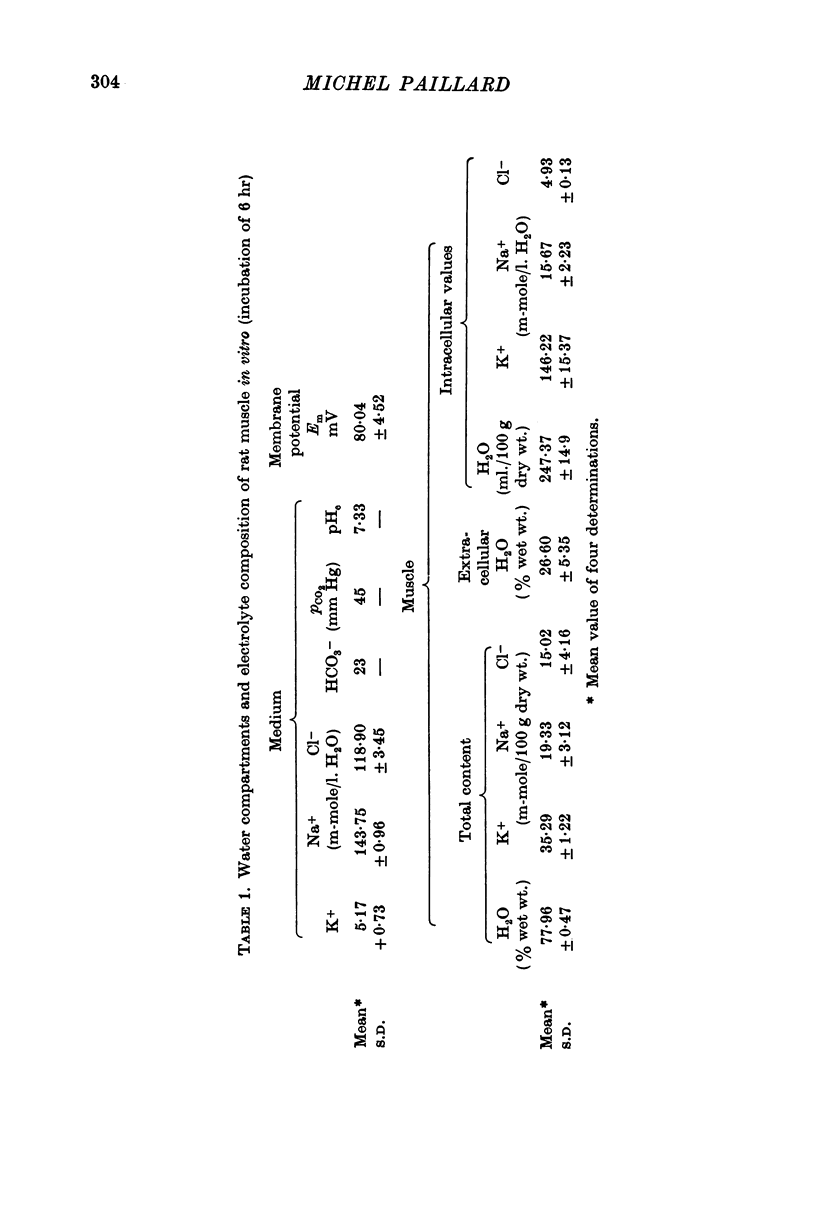
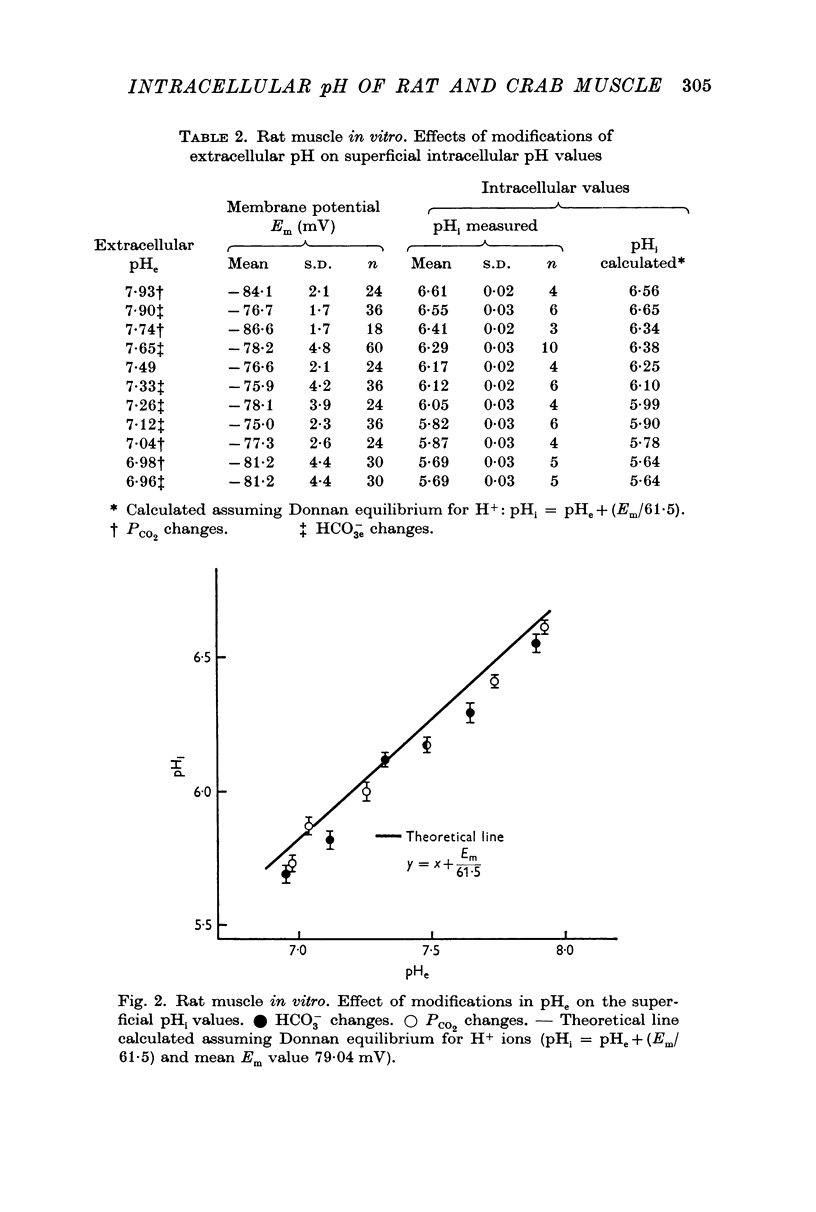
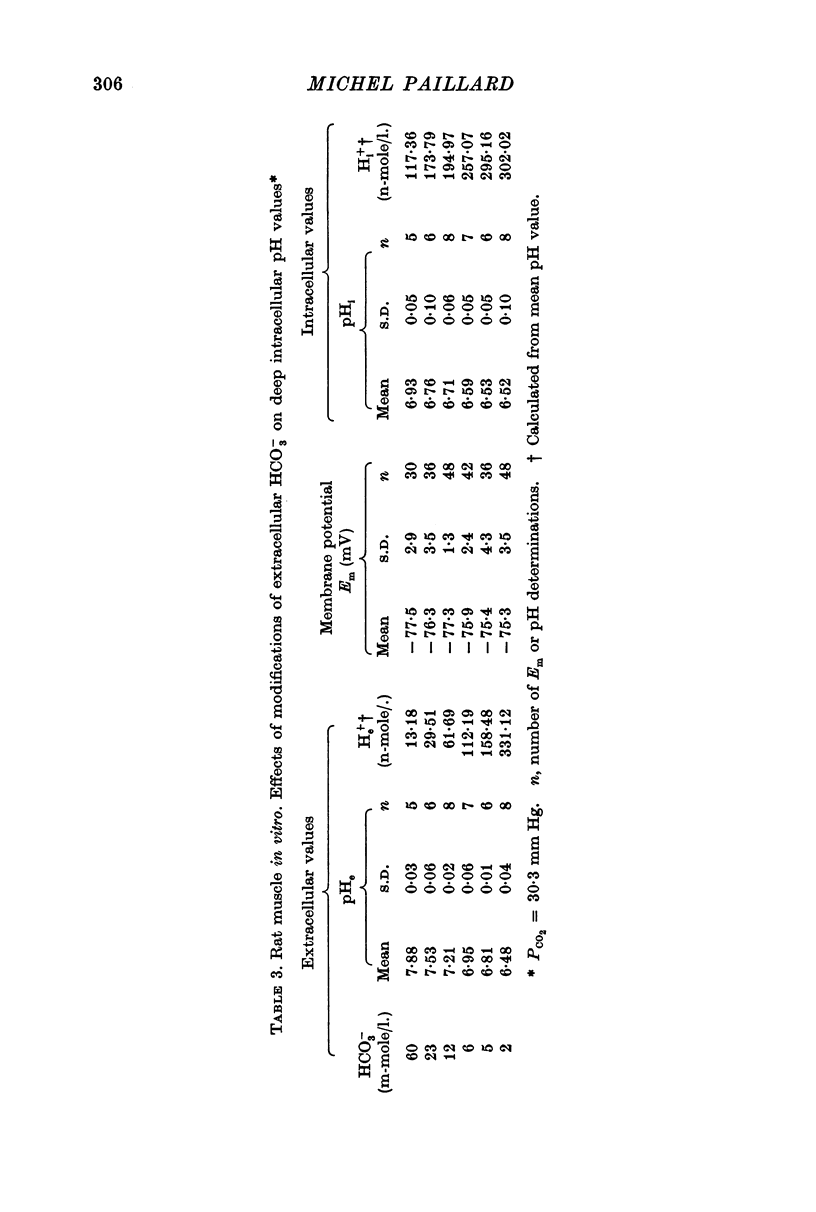

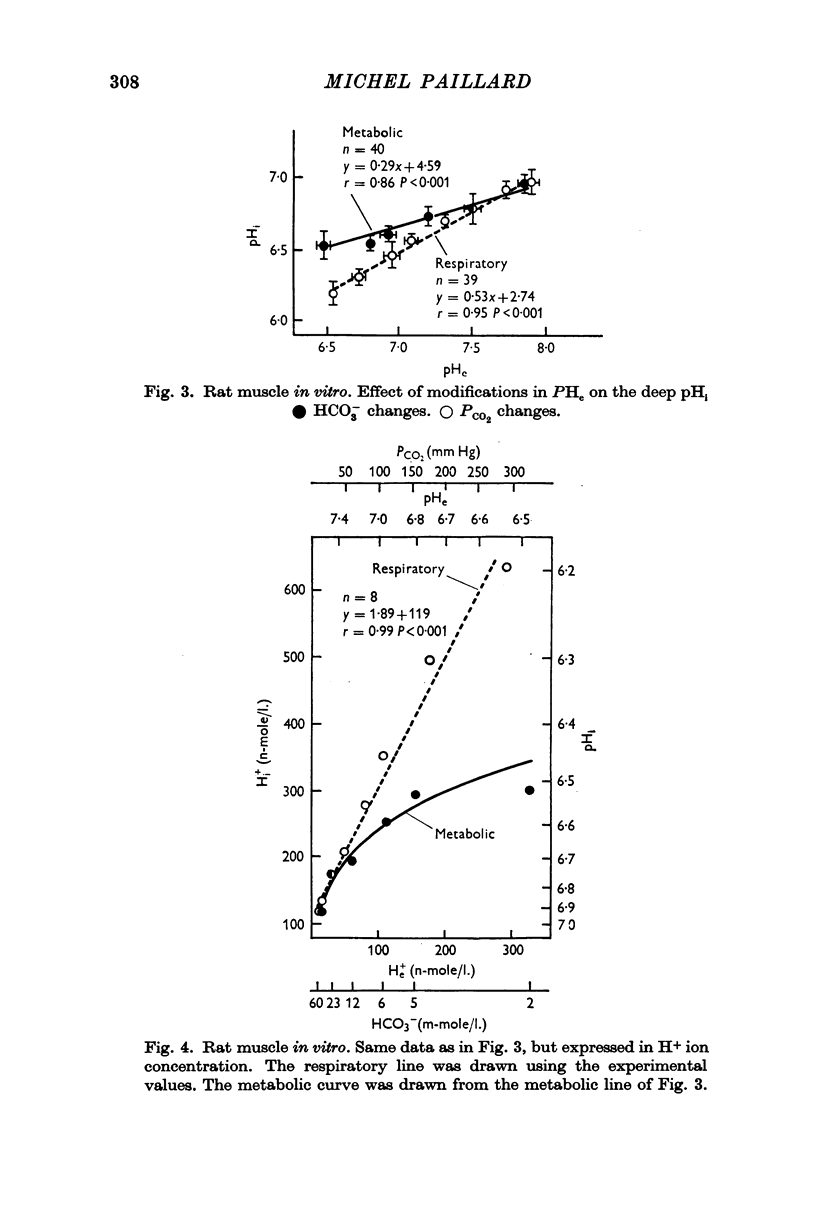
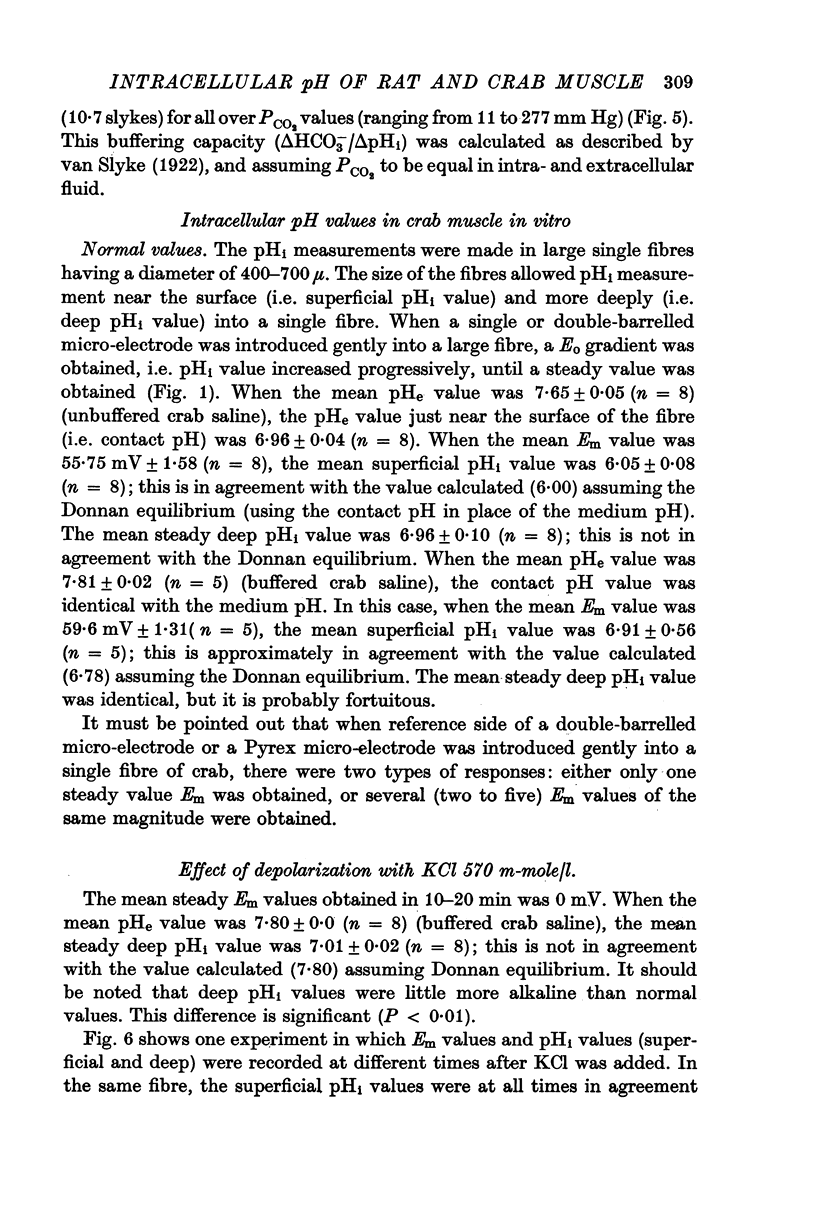
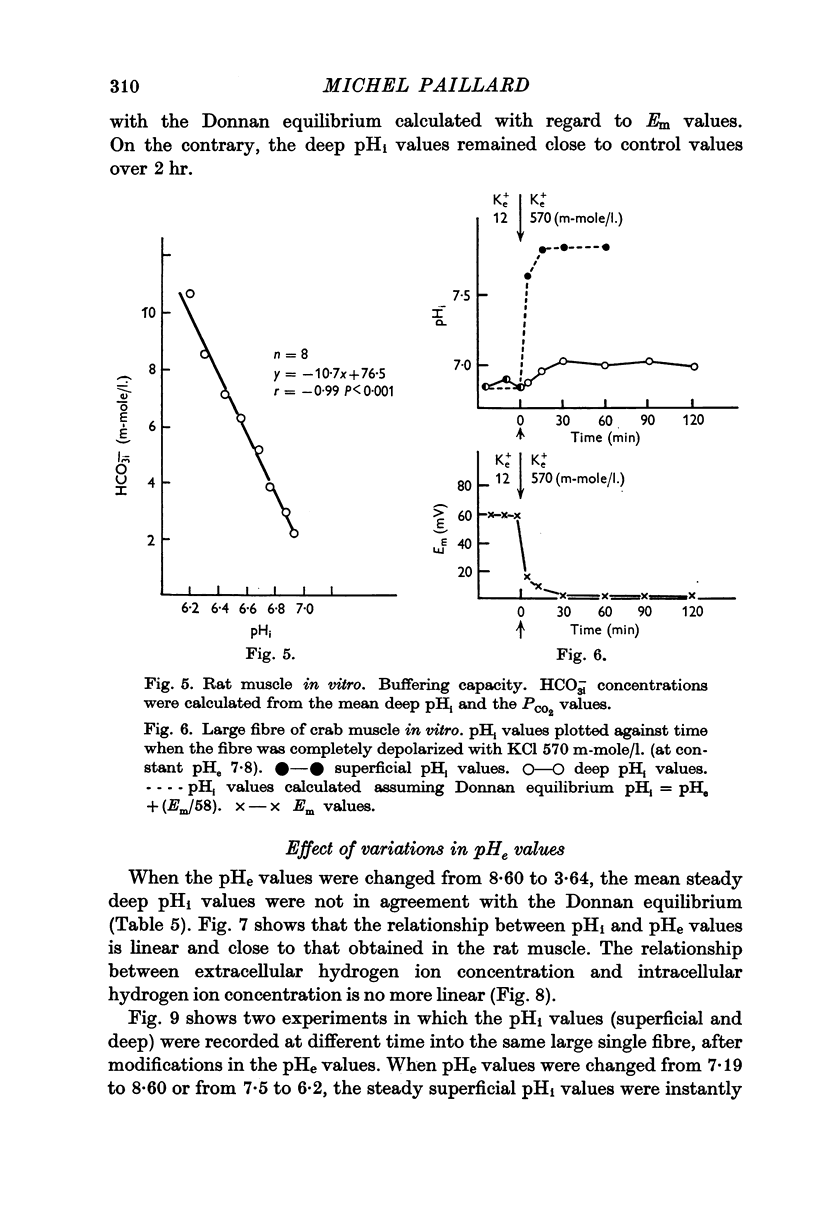

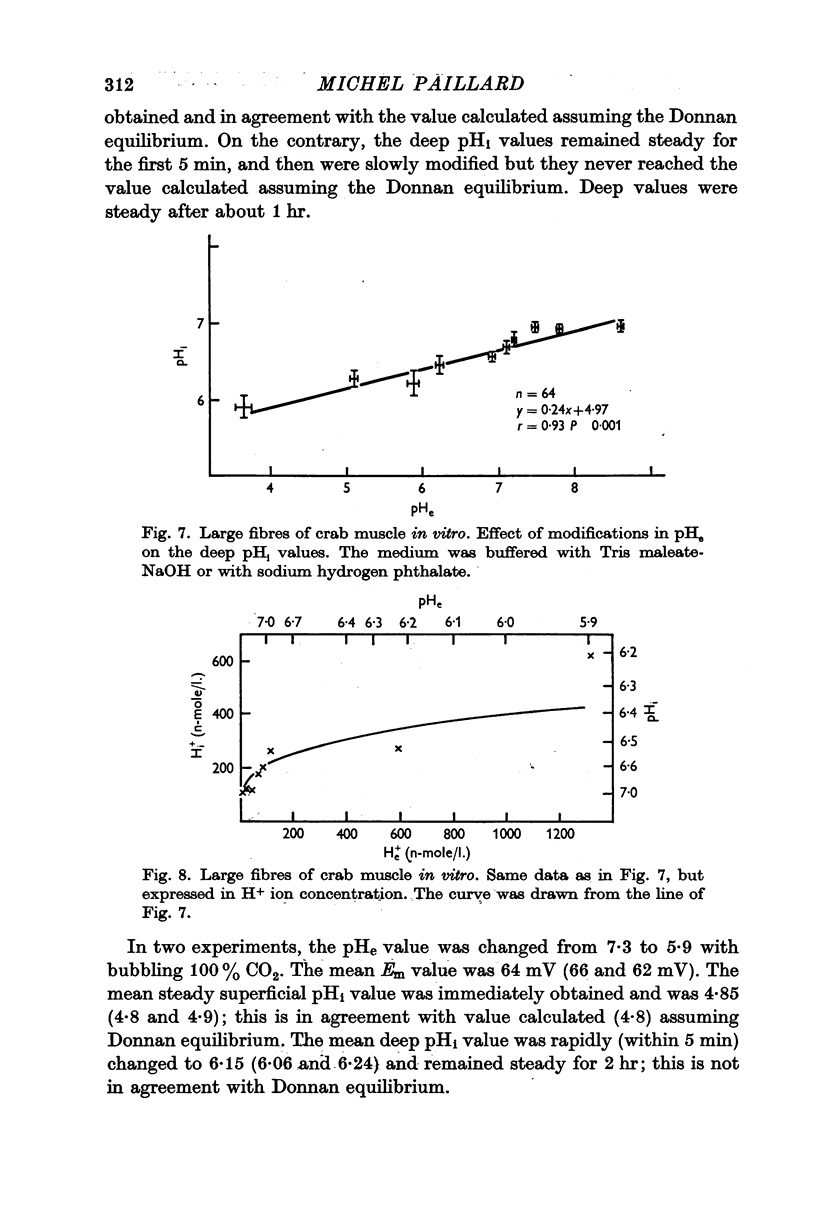
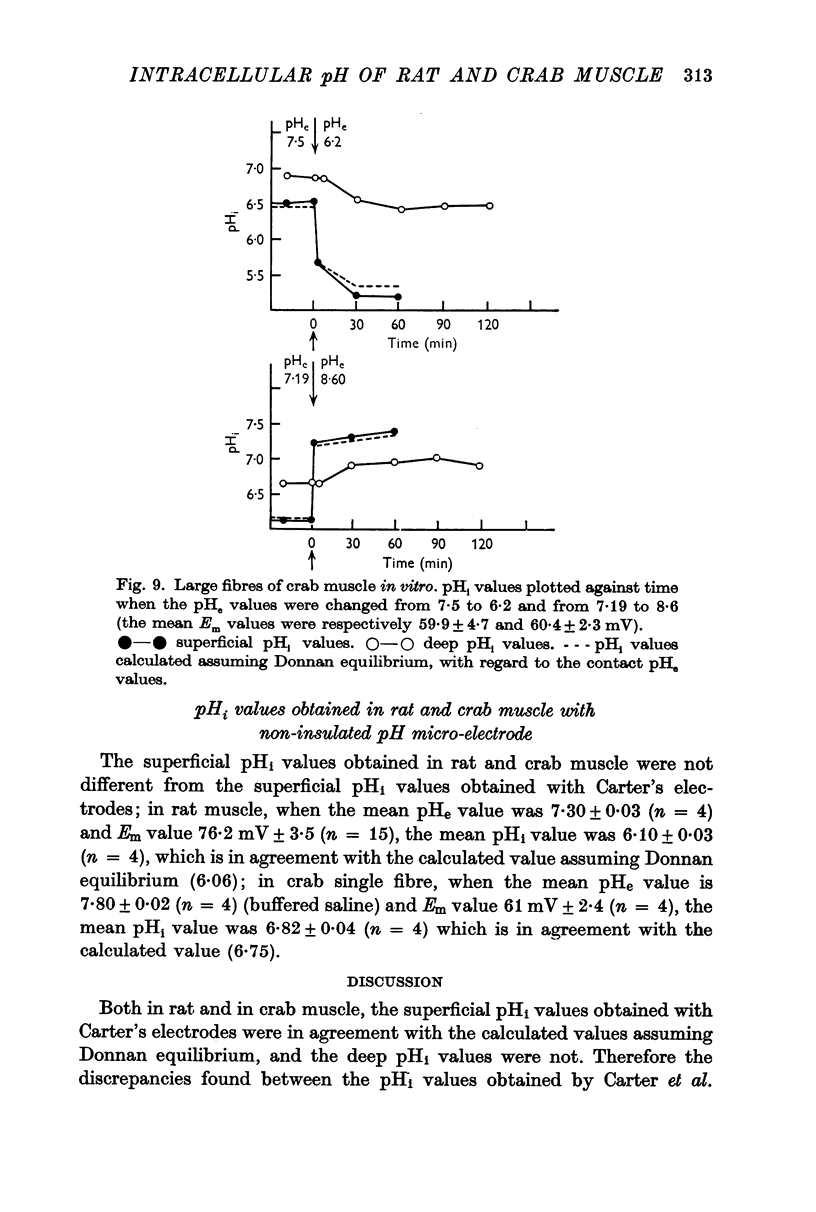
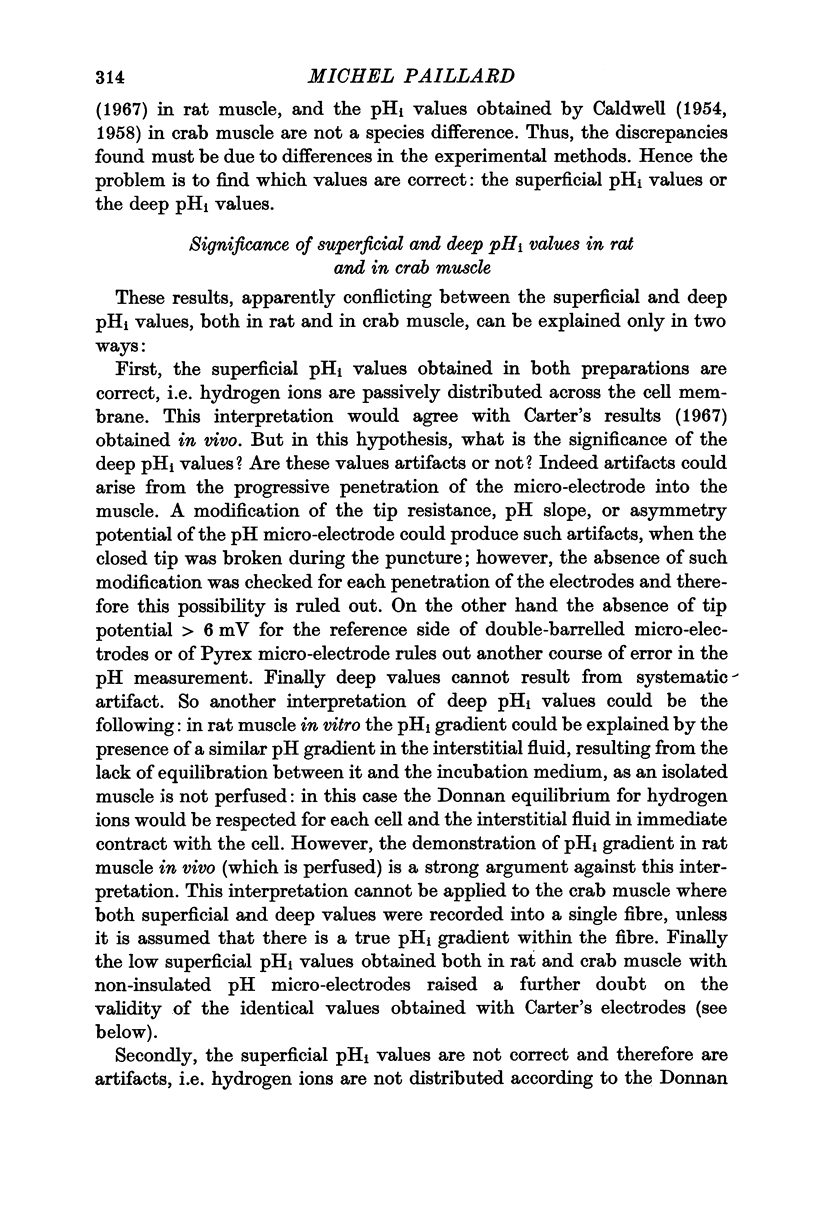
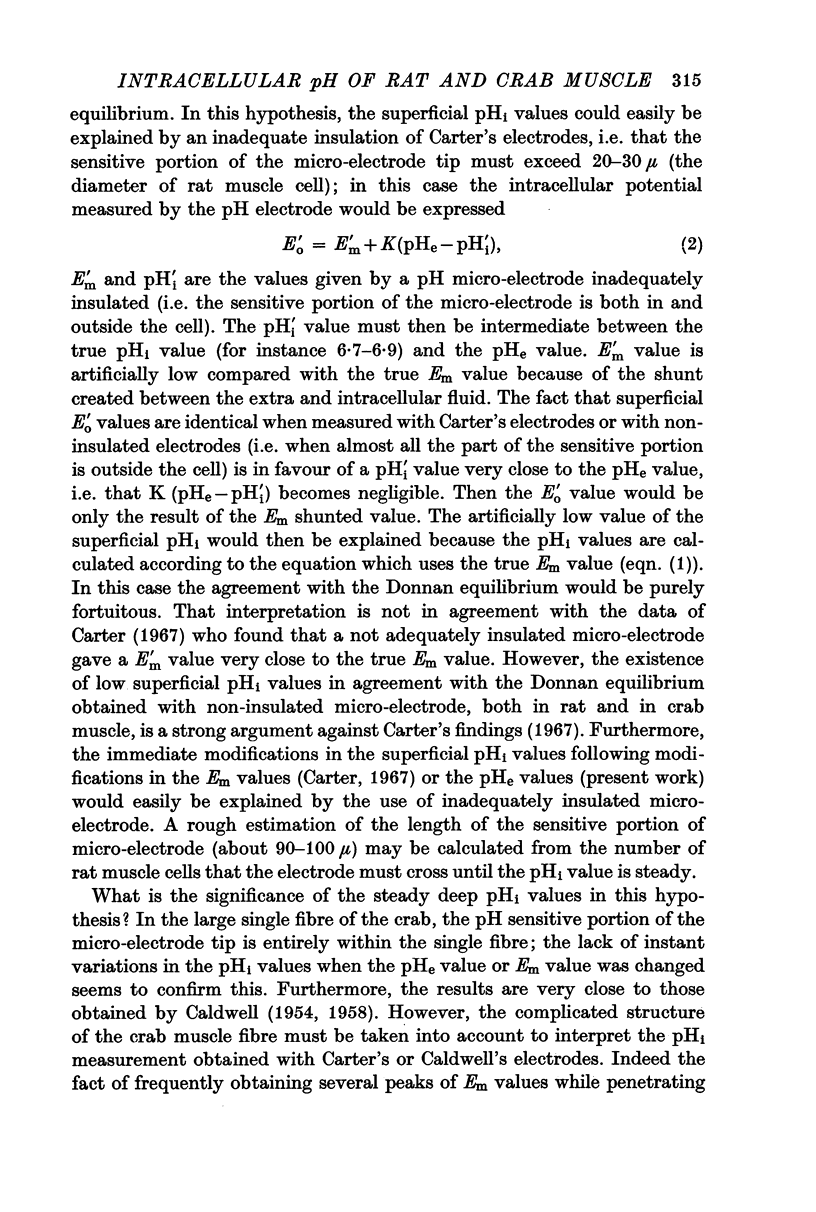
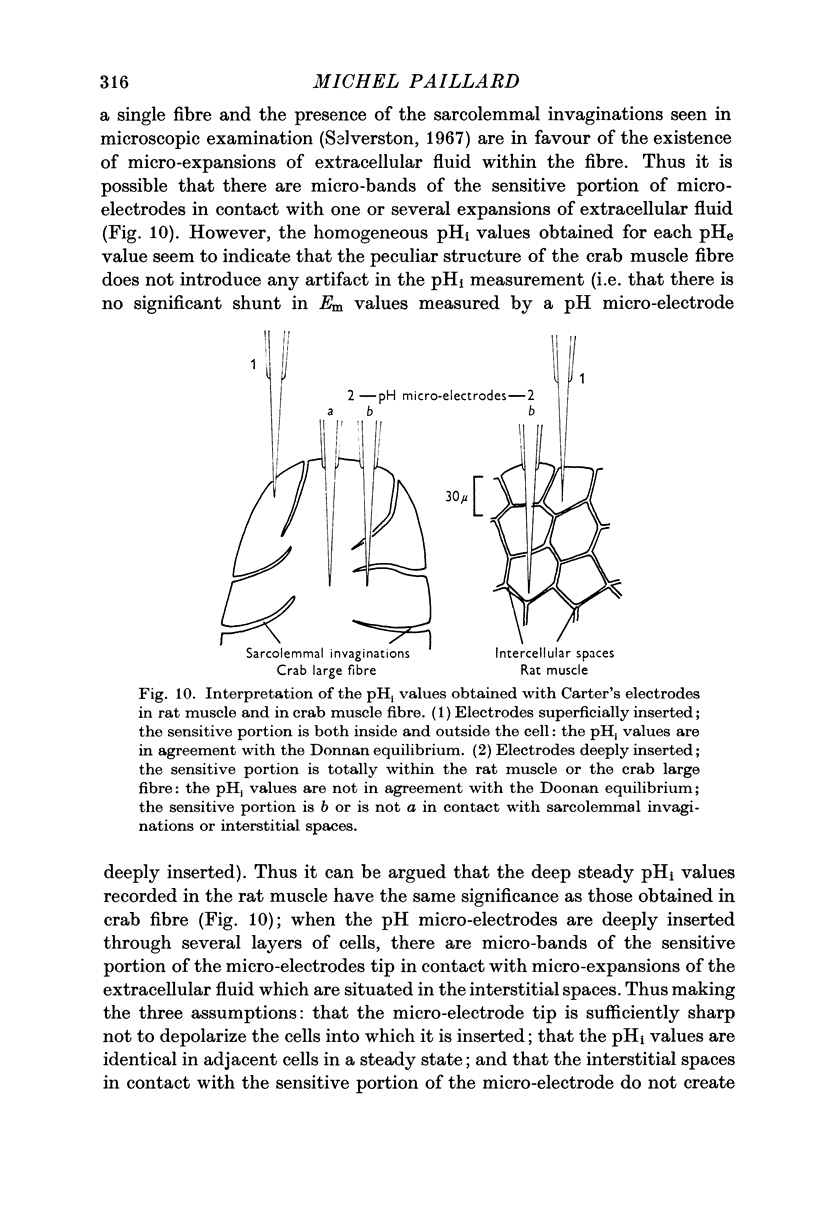
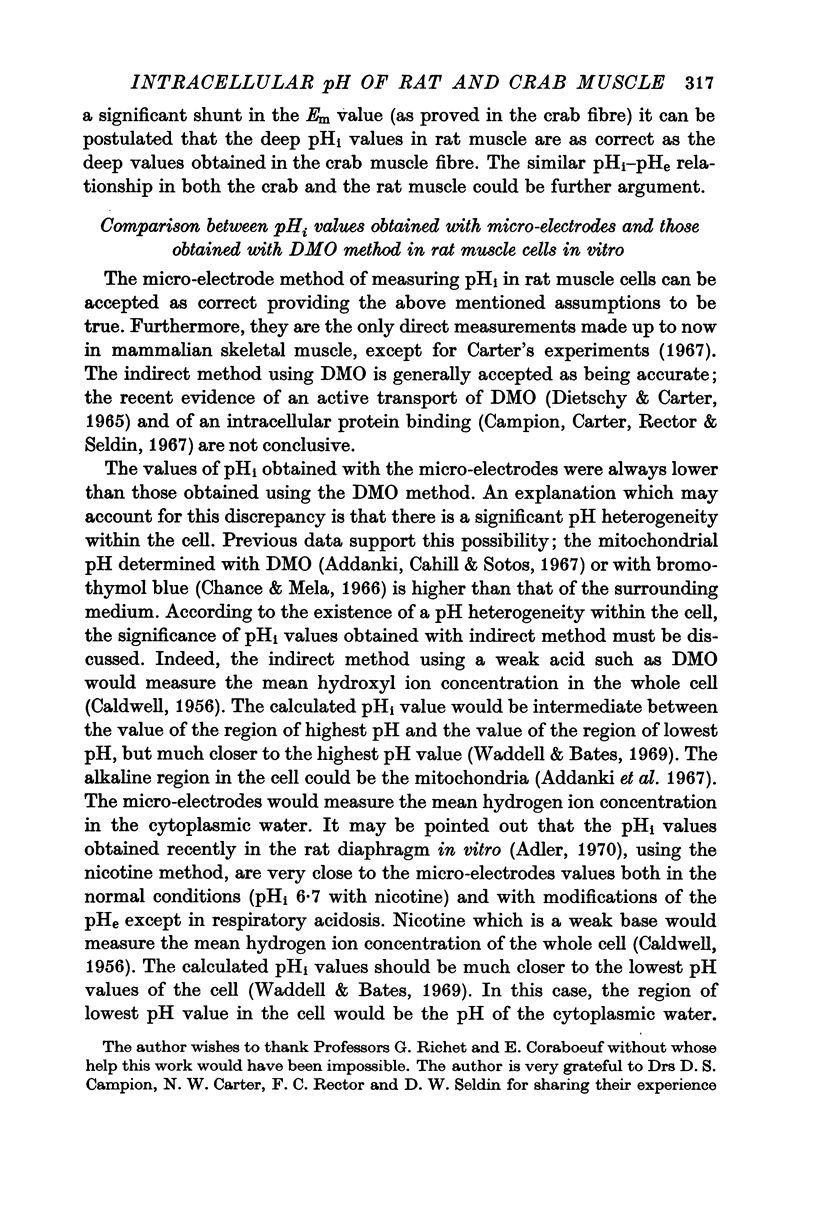
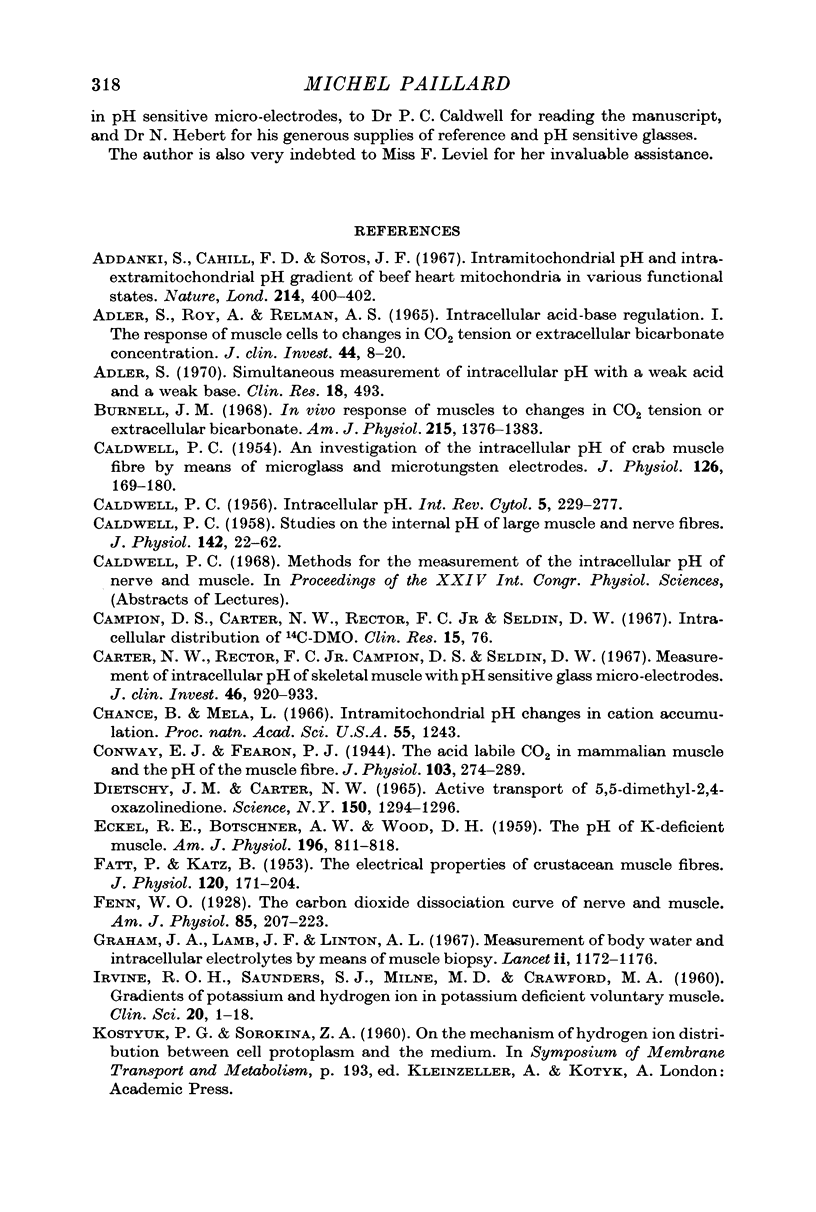
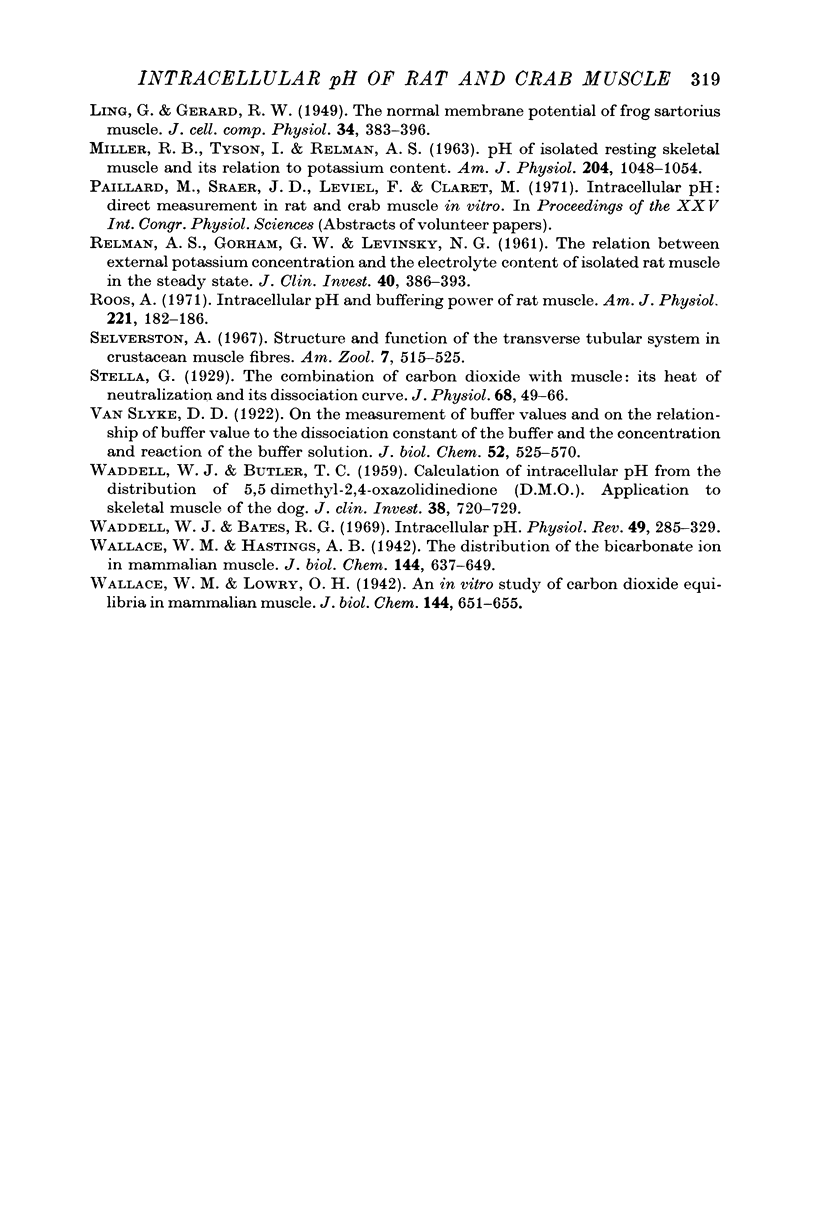
Selected References
These references are in PubMed. This may not be the complete list of references from this article.
- ADLER S., ROY A., RELMAN A. S. INTRACELLULAR ACID-BASE REGULATION. I. THE RESPONSE OF MUSCLE CELLS TO CHANGES IN CO2 TENSION OR EXTRACELLULAR BICARBONATE CONCENTRATION. J Clin Invest. 1965 Jan;44:8–20. doi: 10.1172/JCI105129. [DOI] [PMC free article] [PubMed] [Google Scholar]
- Addanki S., Cahill F. D., Sotos J. F. Intramitochondrial pH and intra-extramitochondrial pH gradient of beef heart mitochondria in various functional states. Nature. 1967 Apr 22;214(5086):400–402. doi: 10.1038/214400b0. [DOI] [PubMed] [Google Scholar]
- Burnell J. M. In vivo response of muscle to changes in CO2 tension or extracellular bicarbonate. Am J Physiol. 1968 Dec;215(6):1376–1383. doi: 10.1152/ajplegacy.1968.215.6.1376. [DOI] [PubMed] [Google Scholar]
- CALDWELL P. C. An investigation of the intracellular pH of crab muscle fibres by means of micro-glass and micro-tungsten electrodes. J Physiol. 1954 Oct 28;126(1):169–180. doi: 10.1113/jphysiol.1954.sp005201. [DOI] [PMC free article] [PubMed] [Google Scholar]
- CALDWELL P. C. Studies on the internal pH of large muscle and nerve fibres. J Physiol. 1958 Jun 18;142(1):22–62. doi: 10.1113/jphysiol.1958.sp005998. [DOI] [PMC free article] [PubMed] [Google Scholar]
- Carter N. W., Rector F. C., Jr, Campion D. S., Seldin D. W. Measurement of intracellular pH of skeletal muscle with pH-sensitive glass microelectrodes. J Clin Invest. 1967 Jun;46(6):920–933. doi: 10.1172/JCI105598. [DOI] [PMC free article] [PubMed] [Google Scholar]
- Chance B., Mela L. Intramitochondrial pH changes in cation accumulation. Proc Natl Acad Sci U S A. 1966 May;55(5):1243–1251. doi: 10.1073/pnas.55.5.1243. [DOI] [PMC free article] [PubMed] [Google Scholar]
- Conway E. J., Fearon P. J. The acid-labile CO(2) in mammalian muscle and the pH of the muscle fibre. J Physiol. 1944 Dec 15;103(3):274–289. doi: 10.1113/jphysiol.1944.sp004076. [DOI] [PMC free article] [PubMed] [Google Scholar]
- Dietschy J. M., Carter N. W. Active transport of 5,5-dimethyl-2,4-oxazolidinedione. Science. 1965 Dec 3;150(3701):1294–1296. doi: 10.1126/science.150.3701.1294. [DOI] [PubMed] [Google Scholar]
- ECKEL R. E., BOTSCHNER A. W., WOOD D. H. The pH of K-deficient muscle. Am J Physiol. 1959 Apr;196(4):811–818. doi: 10.1152/ajplegacy.1959.196.4.811. [DOI] [PubMed] [Google Scholar]
- FATT P., KATZ B. The electrical properties of crustacean muscle fibres. J Physiol. 1953 Apr 28;120(1-2):171–204. doi: 10.1113/jphysiol.1953.sp004884. [DOI] [PMC free article] [PubMed] [Google Scholar]
- Graham J. A., Lamb J. F., Linton A. L. Measurement of body water and intracellular electrolytes by means of muscle biopsy. Lancet. 1967 Dec 2;2(7527):1172–1176. doi: 10.1016/s0140-6736(67)91892-2. [DOI] [PubMed] [Google Scholar]
- IRVINE R. O., SAUNDERS S. J., MILNE M. D., CRAWFORD M. A. Gradients of potassium and hydrogen ion in potassiumdeficient voluntary muscle. Clin Sci. 1961 Feb;20:1–18. [PubMed] [Google Scholar]
- LING G., GERARD R. W. The normal membrane potential of frog sartorius fibers. J Cell Physiol. 1949 Dec;34(3):383–396. doi: 10.1002/jcp.1030340304. [DOI] [PubMed] [Google Scholar]
- RELMAN A. S., GORHAM G. W., LEVINSKY N. G. The relation between external potassium concentration and the electrolyte content of isolated rat muscle in the steady state. J Clin Invest. 1961 Feb;40:386–393. doi: 10.1172/JCI104265. [DOI] [PMC free article] [PubMed] [Google Scholar]
- Roos A. Intracellular pH and buffering power of rat muscle. Am J Physiol. 1971 Jul;221(1):182–188. doi: 10.1152/ajplegacy.1971.221.1.182. [DOI] [PubMed] [Google Scholar]
- Stella G. The combination of carbon dioxide with muscle: its heat of neutralization and its dissociation curve. J Physiol. 1929 Aug 28;68(1):49–66. doi: 10.1113/jphysiol.1929.sp002595. [DOI] [PMC free article] [PubMed] [Google Scholar]
- WADDELL W. J., BUTLER T. C. Calculation of intracellular pH from the distribution of 5,5-dimethyl-2,4-oxazolidinedione (DMO); application to skeletal muscle of the dog. J Clin Invest. 1959 May;38(5):720–729. doi: 10.1172/JCI103852. [DOI] [PMC free article] [PubMed] [Google Scholar]
- Waddell W. J., Bates R. G. Intracellular pH. Physiol Rev. 1969 Apr;49(2):285–329. doi: 10.1152/physrev.1969.49.2.285. [DOI] [PubMed] [Google Scholar]


